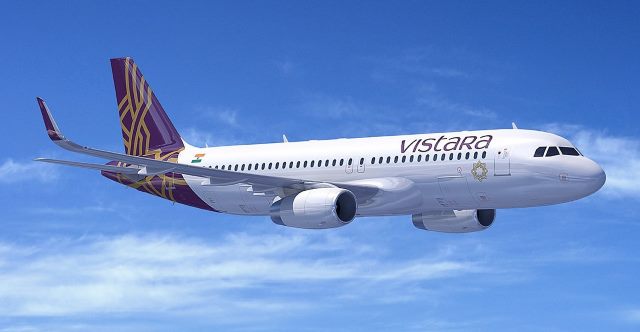Vistara’s Final Flight Marks End of an Era as Airline Merges with Air India

The mood onboard reflected this significant transition. Some younger travelers captured moments on their phones, taking photos of the cabin softly illuminated by purple and orange mood lighting. To commemorate the occasion, the in-flight crew offered a complimentary strawberry pastry topped with vanilla sauce, alongside regular meals, adding a sweet parting touch for Vistara’s final passengers.
At Bengaluru’s Terminal 2, a farewell atmosphere had set in earlier that day. Vistara’s flight UK 854, bound for Mumbai, faced a delay due to air traffic congestion in Mumbai, causing an hour’s delay for boarding. Some passengers expressed frustration, but tensions soon calmed as travelers realized it was a unique day for the airline. The check-in area, too, reflected the merger in action. Crowded Vistara counters led to Air India team members stepping in to help ease the passenger load, symbolizing the ongoing transition.
Vistara’s journey began in 2015 as a joint venture between the Tata Group and Singapore Airlines, with the Tata Group holding a majority 51% stake. With an initial fleet of three Airbus aircraft, the airline quickly expanded to operate approximately 2,400 weekly flights, with a fleet that had grown to 70 planes by the time of the merger. Over the years, it benefited from significant investment, amounting to around ₹9,900 crore.
Announced in 2022, the merger between Vistara and Air India was aimed at consolidating resources and capturing more market share in India’s competitive aviation sector. Yet, the transition faced challenges, including opposition from some pilots. Despite this, the merger’s completion marks a new chapter for Tata Group’s ambitious expansion in aviation.






